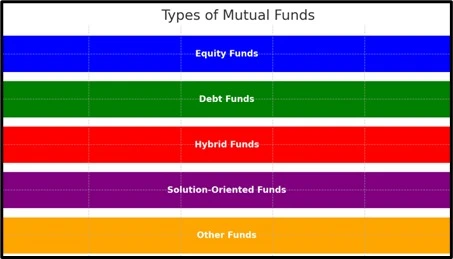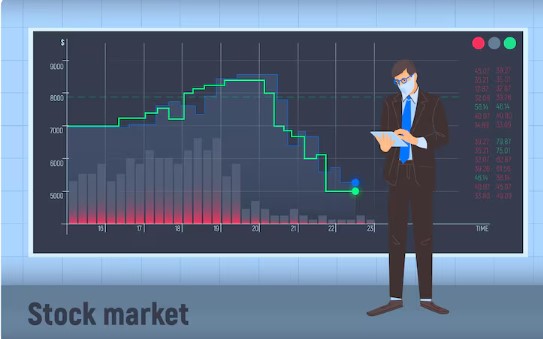Table of Contents
Understand the tax consequences of selling mutual funds, including short-term and long-term capital gains. Find out in detail.
There is a strategic way of growing wealth by investing in mutual funds, though it is important to note that the timing of exiting such an investment is crucial for maximising returns and minimising losses. Exiting mutual funds at the best time can help realign your portfolio with financial goals, thus ensuring that your investments are practical for you.
This article delves into some of the indicators and ways how you can get out of mutual funds, giving an in-depth analysis to enable one to make better choices.
Understanding mutual funds exits
In the investment world, a pool of investors’ funds is used to buy mutual funds such as equities and bonds. This provides individuals with access to a professionally managed portfolio that has been diversified.
Exiting from a mutual fund means redeeming or selling your units in the mutual fund. Depending on your financial needs and investment strategy, this can be done either fully or partially. Selling out of a mutual fund actually means that you convert your investment into money that may be useful elsewhere or be re-invested elsewhere.

Importance of having an exit strategy
Having a clear exit plan is significant for several reasons:
1.Maximising returns: It facilitates locking in your gains and avoids losses that may occur. For example, if the value of your mutual fund has increased significantly, the exit policy can help you to cash in those profits before prices start declining.

2.Managing risk: An exit strategy is essential to effectively manage and minimise risks arising from market fluctuations and fund performance. Simply put, it makes sure that your investment portfolio aligns with what you are willing to lose.
3.Achieving financial goals: Investments ought to align with financial goals. Consider the case where retirement is fast approaching, and there has to be a significant shift from high-risk securities to low-risk ones.
4.Tax efficiency: Well-planned exits also assist in addressing tax implications resulting from selling mutual fund units. For example, such investments become liable only for long-term capital gains taxes, which are usually lower than those of their short-term counterparts after being held for more than one year.
Things to keep in mind while exiting a mutual fund investment
- Check the exit load: The exit load is the fee you pay to sell your units before a specific period. To find out what the exit load is, check the scheme information document. For instance, if a fund has an exit load of 1% for redemptions within one year, then ₹1000 will be charged as a fee on redeeming ₹1,00,000.
- Timing: Returns can be significantly affected by the timing of your exit. It is best if one exits at the right time to maximise returns. In this case, exiting and locking in your gain might be advisable since this could be when the market is peaking.
- Financial goals: Consider your financial goals before exiting a mutual fund investment. Once your financial goals are achieved, think about whether further investments are necessary or not. For instance, it may be time to exit when you have saved ₹5 lakhs for your child’s education, which was initially set as your target.
Key indicators for exiting mutual funds
Understanding when to exit a mutual fund is essential for maximising investment returns and achieving financial goals. Here are some key indicators that can help you decide whether it’s time to pull out of a mutual fund investment.
1.Understanding your goals
When mutual funds are approaching your financial objectives, it is one of the leading indicators that you must exit them. Let’s assume that five years ago, you invested ₹5,00,000 in a mutual fund to buy a home, and now it has grown to ₹8,00,000, and you plan to purchase the house in another six months. With such closeness to the goal, there’s a need to start gradually withdrawing investments so that funds can be available when required. Doing this safeguards wealth against market fluctuations while ensuring the timely attainment of personal finance goals.
2.Consistent underperformance
Another vital sign is consistent underperformance by the fund itself. Imagine you’ve invested in a mutual fund that has not performed as well as its benchmark index or its competition over the past year. Your benchmark index yielded 10%, whereas your mutual fund only managed to return 4%. Before making any decisions about selling, you take the time to investigate further and discover that this underperformance is attributed to poor stock selection by the fund manager instead of overall market conditions. In such a case, it would be prudent for you to pull out of that particular fund and invest in one that performs better.

3.Change in investment objectives
Another signal indicating an exit from a mutual could be caused by changes in personal investment objectives. Let’s say you invested in a high-risk equity mutual fund when you were in your 30s for aggressive growth. But now, as you approach your 50s and start thinking about retirement, your risk tolerance has changed, and you’d like to invest more conservatively. This shift in goals means it is time to move out of the high-risk fund and into something like a balanced or debt fund that is less risky so it can align with what’s financially important to you at this stage of life.
4.Fund management changes
You must consider how changes within management affect actively managed funds because these often see significant shifts post-transition periods where new strategies do not align with existing investor expectations. Continuous evaluation of performance following such transitions will enable more informed decision-making regarding continued participation in affected schemes.
Tax implications and costs
The tax imposed when leaving a mutual funds depends on the kind of mutual fund and how long you have held it.
In equity-oriented mutual funds, if you redeem your units within one year, then these gains will be treated as short-term capital gains (STCG), which attract a flat 20% tax rate. However, if they are held for more than one year, all such benefits accrue as long-term capital gains (LTCG), where up to ₹1.25 lakh per annum remains free from any taxation, but anything above this limit attracts a 12.5% levy without indexation benefit.
Example:
| Held for over 1 year | Redeemed within 1 year | |
| Investment amount | ₹1,00,000 | ₹1,00,000 |
| Current value | ₹1,50,000 | ₹1,50,000 |
| Profit | ₹50,000 | ₹50,000 |
| Capital gains type | Long-term capital gains (LTCG) | Short-term capital gains (STCG) |
| Tax rate | 0% (₹1.25 lakh: exemption limit) | 20% |
| Tax liability | ₹0 | ₹10,000 |
For debt-oriented funds, things work differently. Irrespective of the holding period, gains from these funds are taxed according to the investor’s income tax slab rates. This change was introduced in the Finance Bill 2023, which removed the indexation benefit previously available for long-term holdings.
How to exit mutual funds
Exiting mutual funds can be a straightforward process if you follow the right steps
Redemption
Complete a redeeming form including the amount, folio number, and your signature to redeem mutual funds. Either send a written application including the same information or show this form at the assigned transaction point. On the other hand, you could request redemption online using the website of the mutual fund or tools offered by distributors or registraries.
Switch out
You can move the earnings to another scheme inside the same fund house instead of redeeming them and hold them there till needed. Send a switch request including the pertinent information on the new scheme to accomplish this.
Systematic withdrawal plan
Enrolling in a systematic withdrawal plan (SWP) will let you arrange consistent withdrawals. This strategy lets you get a set amount out of the investment paid back on designated dates and intervals. The investor has to finish and turn in an SWP form to activate an SWP.
It’s important to identify situations where hanging onto your investments might be the better option. These are some important guidelines on when to wait before selling your mutual fund:
- Avoid emotional decisions: Never sell out of impulse or anxiety. Usually, market declines recover over time.
- Short-term fluctuations: Steer clear of decisions grounded in transient performance. Evaluate the fund’s performance across an extended length of time.
- Investment styles: Acknowledge the ups and downs in investment approaches. Sell not only because a given style is momentarily popular.
- Fund manager changes: A new fund manager does not always mean you should sell. Track the fund’s performance following the transition before making decisions.
Conclusion
For investors, it is critical to exit mutual funds at the right time in order to maximise returns, manage risks and maintain tax efficiency. A good exit plan designed around financial needs and market conditions will shield investments from risk while ensuring they are in line with your overall objectives. Regular portfolio reviews combined with keeping up-to-date on what’s happening in the markets are critical. Constantly monitor trends that could impact your holdings; this way, you’ll know when it might be necessary for you to pull out.
DISCLAIMER: This article is not meant to be giving financial advice. Please seek a registered financial advisor for any investments.
- Indian Stock Market Today: 8th Consecutive Day of Winnings! - September 12, 2025
- Indian Stock Market Today: Market shines in optimism - September 10, 2025
- Cash Investment Options in 2025: Approaches for Returns and Long-Term Wealth Building - September 9, 2025





